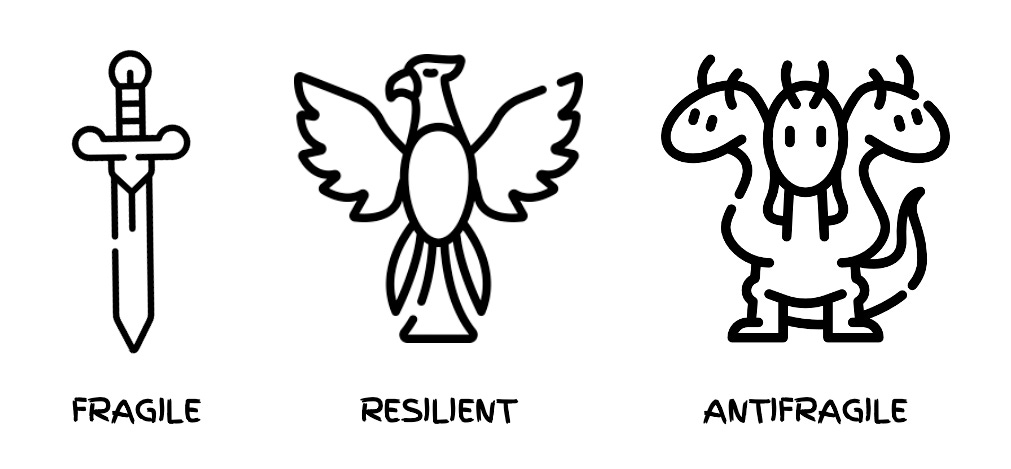12 April 2022
Fragile, Resilient, Antifragile
Last month, the power went out at the gym. Lights went black, the treadmills stopped moving, and huge, medieval-looking doors slammed shut around us—sealing us inside like the plot of an Agatha Christie novel. It made me realize how fragile my workout was: No electricity, no running.
In Greek Mythology, the Sword of Damocles is a story about a commoner (Damocles) who wanted to sit on the king’s throne for a day. Despite the lavish accouchements surrounding the throne, a sword dangled by horsehair above it—reminding the king that all his luxury could disappear at a moment’s notice. The king had made many enemies on his rise to power, which left him fragile. Like a beautiful house of cards, my treadmill routine was fragile—very optimized and convenient, but dependent on something beyond my control.
After a generator kicked on the doors lifted, and I left the gym without completing my run. I told myself I’d be resilient and try again tomorrow. Like a phoenix, I could rise from the ashes without ruining my training schedule. But I was still at the whim of external circumstances.

Some ways to develop antifragility:
- Don’t overoptimize—give yourself extra time, money, equipment
- Seek ways to win regardless of volatility—such as the barbell investing strategy
- Avoid external dependencies